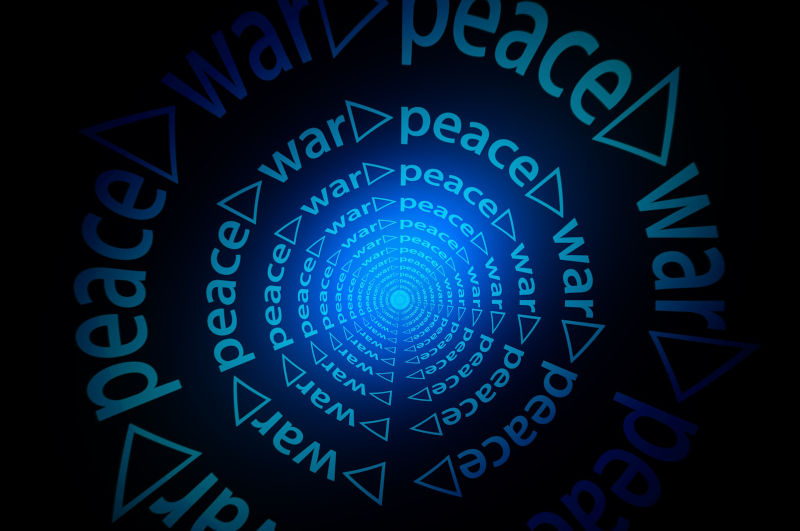
When reporting on Russian atrocities, mainstream media have also been preoccupied with the supply of arms to Ukraine, with news of Finland and Sweden joining NATO and with fingers crossed forecasts of the defeat of Russia. In media minds and in academic circles, advocacy of peace finds little or no space.
Why should Australians be surprised? Over the past forty years, with few exceptions, university managers have closed centres where the study of peace had been a priority for students. By contrast, anything related to war, though euphemistically called defence, strategic or security studies, has been supported.
In his June 29 Sydney Morning Herald article, ‘Vital challenges for our top brass’, retired major general Mick Ryan advocated investment in ‘new long-range missile and strategic influence capabilities, cyber, space and high readiness conventional units to ensure any adversary thinks twice about interfering with our sovereignty or our interests abroad’. In an echo of former Defence Minister Peter Dutton’s ‘prepare for war’ remarks on Anzac Day, Ryan warns ADF leadership to be ready to act resolutely ‘to possibly fight a major war.’
Forecasts about war should have increased interest in peace, but in official circles, that has not happened.
In Foreign Affairs and Trade (DFAT), the 1970s influence of the visionary former Head of External Affairs Dr. John Burton, an innovator in conflict resolution, has ended. He has no successor, though the creative John Langmore, former MP, one time Director of the UN division for social policy and development has influenced the introduction of peace building studies at the University of Melbourne, and with apparent DFAT blessing.
Yet compared to the foreign affairs activities of Norwegian governments, Australia’s DFAT has shown little interest in training staff to contribute to peace. The Norwegian government regards engagement in peace and reconciliation as a priority in foreign policy and a central feature of the identity of Norway as a nation. In Colombia, Sri Lanka and South Sudan, Norwegian peace negotiators have facilitated dialogue between parties to conflicts. In such commitments, Norway punches above its weight. A much larger Australia shows interest in peace only as an afterthought, seldom a priority.
There could be world-wide benefits if Australia’s record of participation in wars and enthusiasm for building monuments to war, was replaced by a new identity: a nation which promotes peace. The time is now, despite a discouraging past.
The dismal record of Australian university closures of peace studies departments, suggests disinterest fomented by the assumption that research into peace was insufficiently academic. In the early 1980s, DFAT ceased funding peace studies at the ANU. At the same time, private funds to build a centre for conflict resolution at Macquarie University disappeared into business studies. Recently, at the University of Queensland, a peace centre created by the pioneering peace scholar the late Ralph Summy was swallowed by a Department of Governance and International Relations.
In 2015, the closure of the thirty years old Center for Peace and Conflict Studies at the University of Sydney displayed managerialism unworthy of a university. For staff work with Tamils in Sri Lanka, in investigating genocide in West Papua and in engagements with peace advocates in Gaza and the West Bank, that Centre enjoyed an international reputation. Students became expert in the language and practice of non-violence, in projects to advance human rights and in conflict resolution. On graduation, they obtained peace-oriented employment in south east Asia, in Japan, Europe and African countries. Yet university management appear to have considered staff/students’ advocacy of peace with justice not financially viable and too controversial for a prestigious university.
To the credit of a small number of teachers at the University of New England, peace studies survives, albeit under the umbrella of a large Faculty. But at Sydney, by the end of 2022, apparent academic demarcation disputes ensure the disappearance of any autonomous peace studies.
Given lukewarm government and university interest in peace, the vacuum has been filled by civil society initiatives led by the International Peace and Advocacy Network (IPAN), by Raising Peace, by the Medical Association for the Prevention of War (MAPW) and the Australian Palestinian Advocacy Network (APAN). Not hobbled by university managerialism or government restrictions, those organisations support the People’s Forum for Peace in Ukraine to be held on July 24 via Zoom .
Imagining peace requires not consensus type activities, but courage to address entrenched conflicts, as in the decades long Israeli military occupation of Palestinian lands. That issue, as with the geopolitics of the Ukraine war, means confronting any country’s foreign policy of aggression as a way to solve conflicts or defeat opponents. Now that nuclear armed Russia imitates nuclear armed United States in mindless violence, the avoidance of unimaginable destruction from a nuclear war is a peace priority.
In Australian political, media cultures and in institutional contexts, talk of war diverts attention from the life enhancing goal of peace with justice – respect for international law, for universal human rights, for security through social and economic policy not by force of arms.
To study, speak, write and protest for peace, rehearses ways to end violence. The Ukraine catastrophe makes those tasks imperative.




